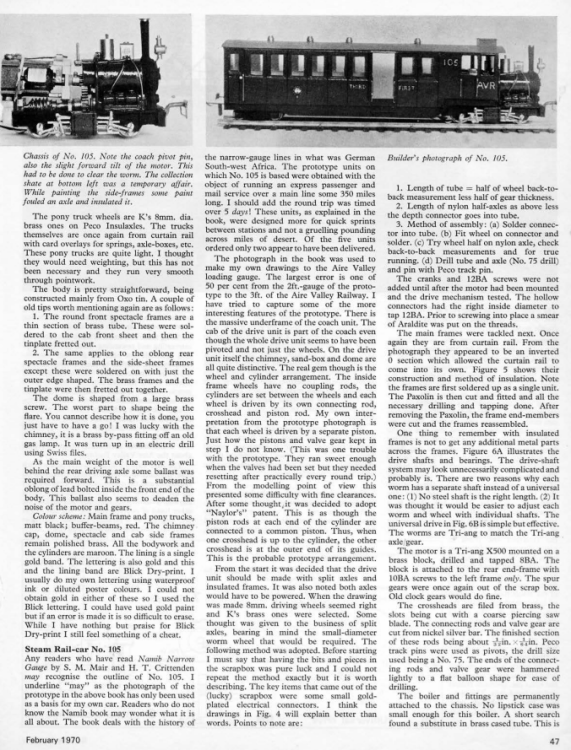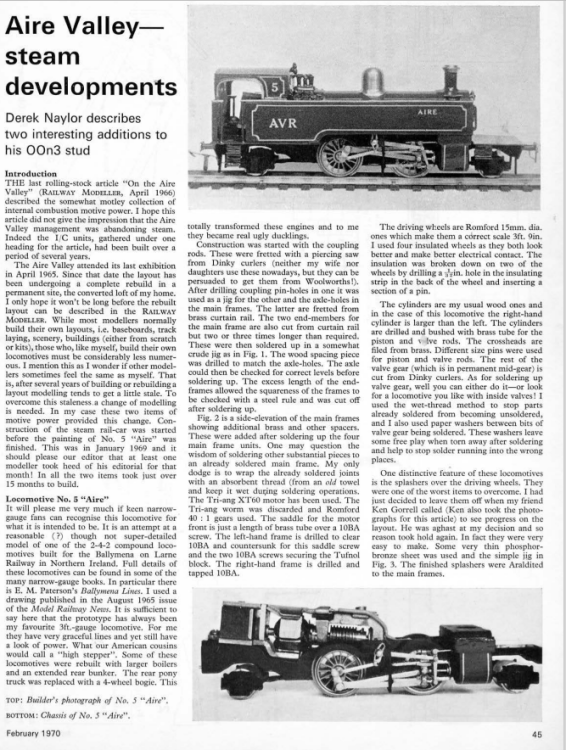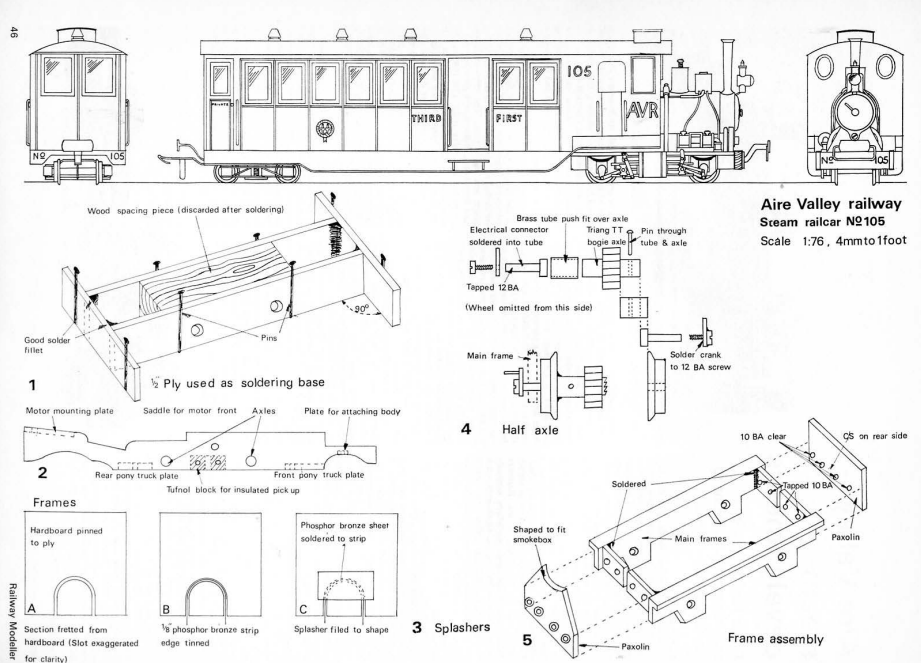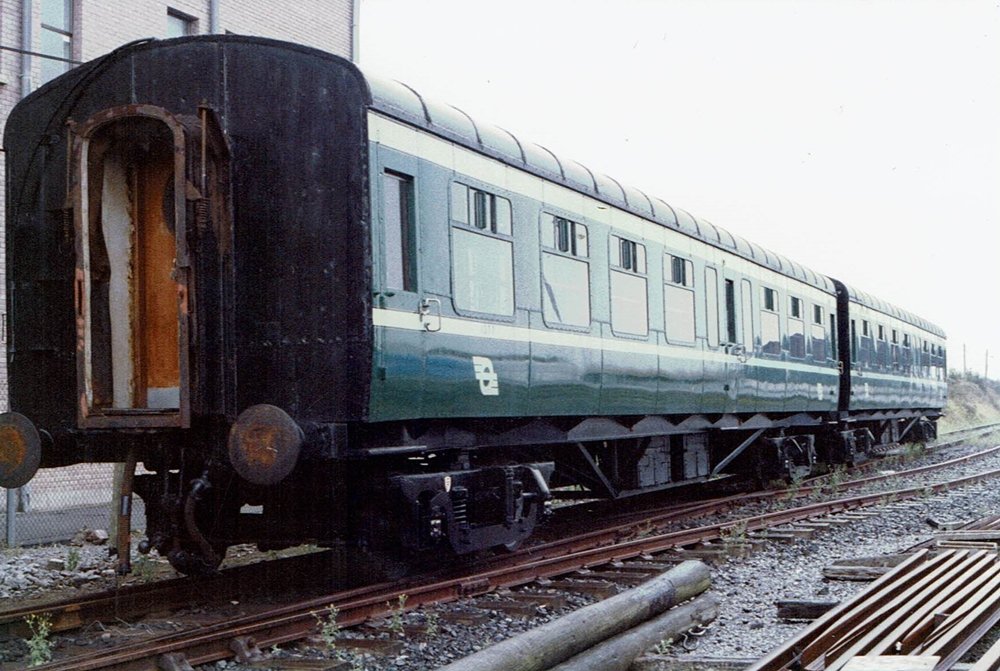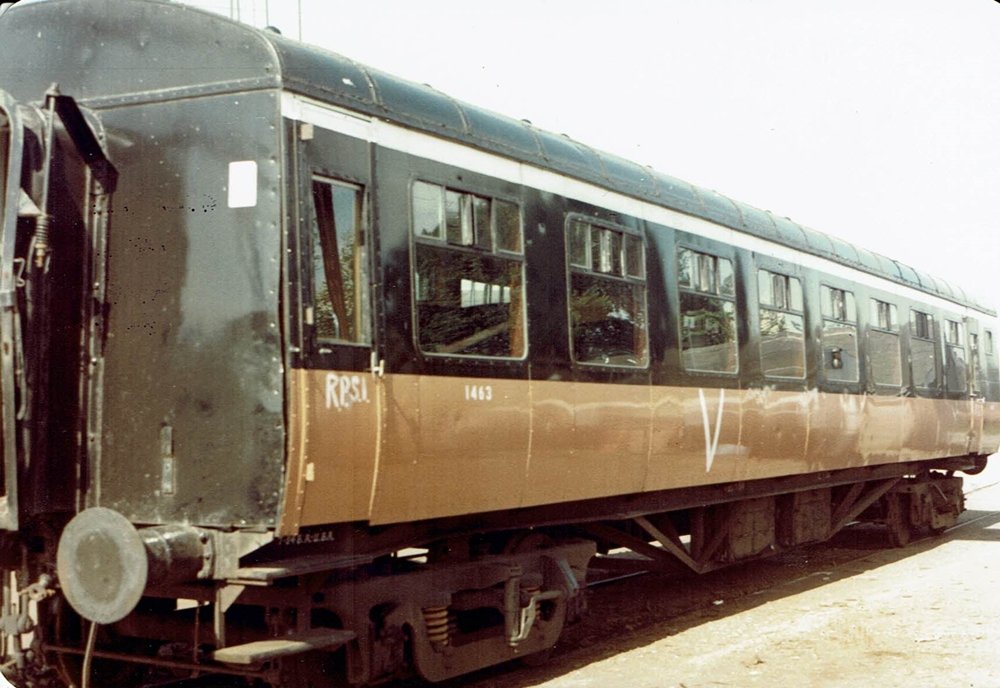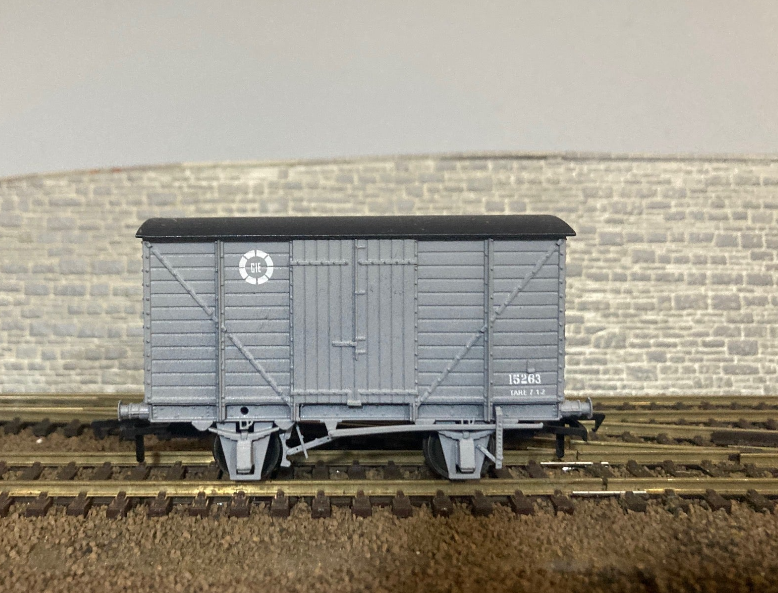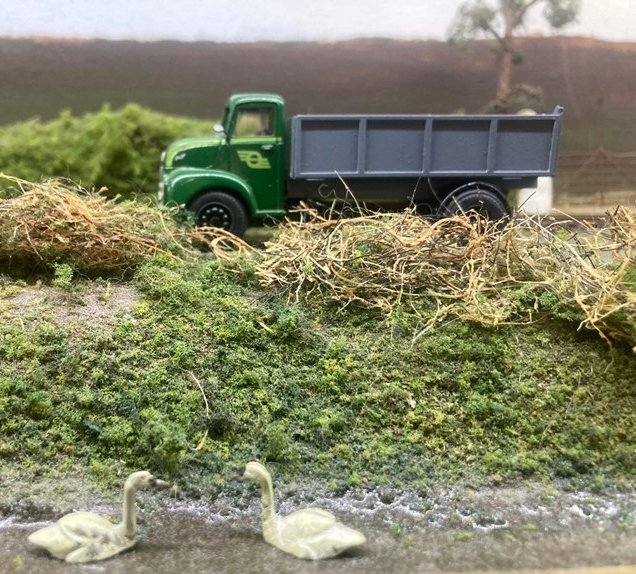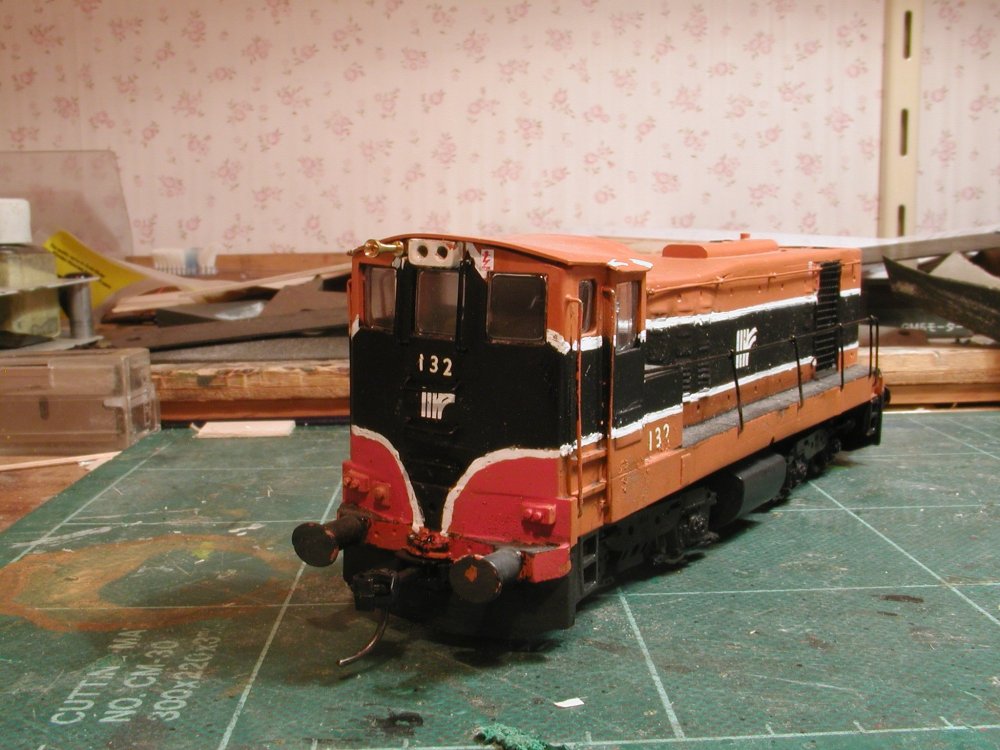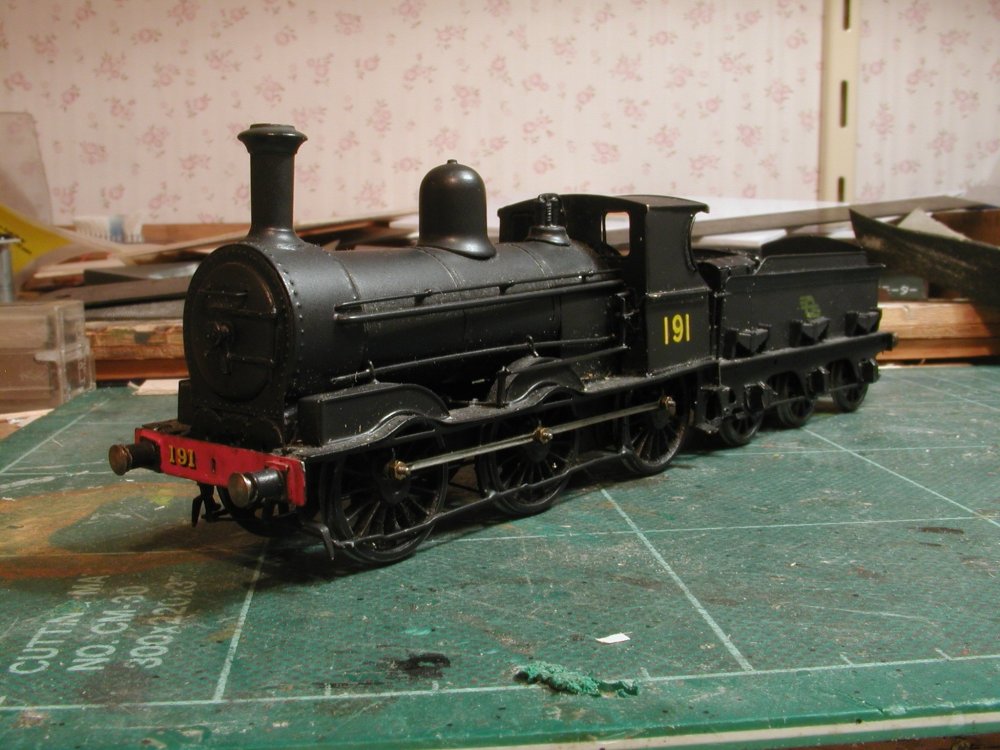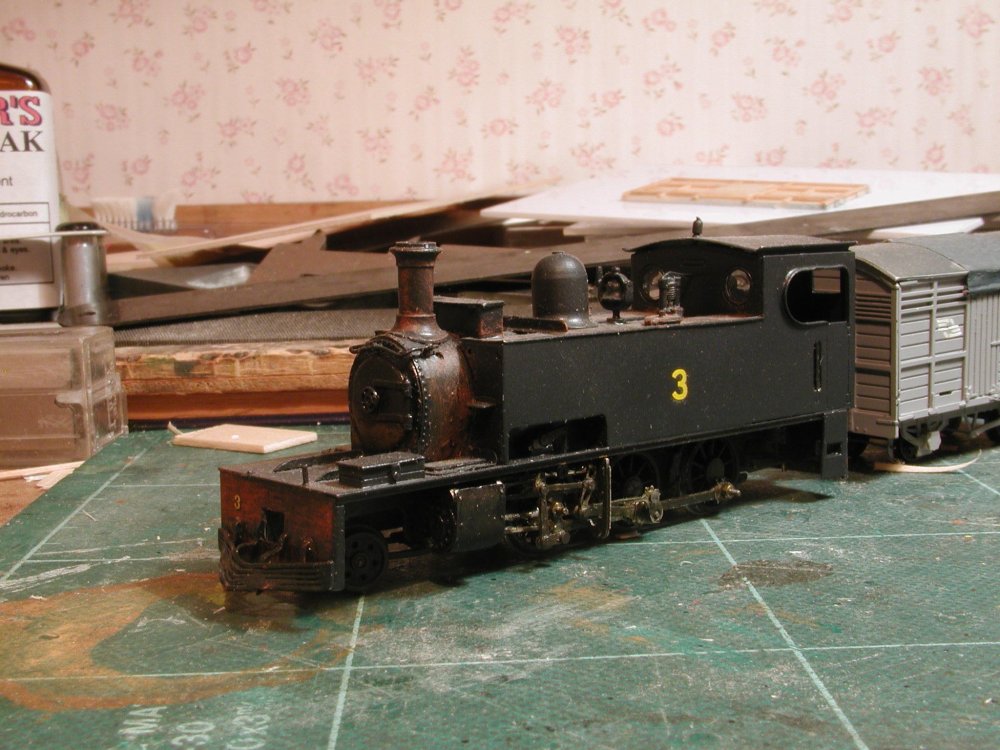-
Posts
4,871 -
Joined
-
Last visited
-
Days Won
119
Content Type
Profiles
Forums
Events
Gallery
Blogs
Store
Community Map
Everything posted by Mayner
-
The Aire Valley was pioneering in terms of 3' narrow gauge modelling, but very much in the freelance tradition as opposed to a model of a particular prototype. I did not realise the final version of the layout was based on the Madder Valley in its entirety until I visited Pendon while living in the Home Counties during the late 80s. Very much a generational thing as Colin R commented when serious modellers built quite creditable railway systems often with everything scratchbuilt apart from wheels gears and motors and brick/stone paper. The Madder Valley was probably the 1st scenic layout with scenery, building and structural modelling (and atmosphere) of equal importance to locos, stock and what was taking place inside the railway fence. Funnily enough I started building bodywork from drinks tins on Triang chassis as a teenager in the 1970s, before turning to more conventional scratch and kit building during the 80s
-
Some nice photos of both 64 and 70 seat Laminate Coaches showing the distinctive original laminate panel and cover slips in josefstad 1 Jan 2019 post about half way down Page 2 of ECMs excellent thread on building a Laminate coach with the assistance of Worsley Works scratchbuilders parts. As they say the history of CIE coachbuilding at Inchacore is complicated.
-
Derek Naylor a pioneering OOn3 modeller built a model based on an NCC 2-4-2T for his Aire Valley Railway during the 1960s. A series of articles on the Aire Valley and its locos was published in the Railway Modeller during the 1960s-early 70s. The Aire Valley was inspired by John Ahearn's Madder Valley a self contained light railway linking a port with a hinterland, scratchbuilding techniques were fairly typical of the era with a number of locos and railcars inspired by Irish practice including a T&D look alike 2-6-0T, a CVR "Unit" rail tractor and a pair of 4w railcars inspired by early CDR practice. Stock and motive power was international in nature including an American Forney 0-4-4T, a German South West Africa steam railmotor, a Hunslet Heisler geared loco and American Back-Woods railtrucks1 If anyone is interested in a complete set of Aire valley articles please send me a PM.
-
While the early CIE coaches and the Laminates are similar in overall length and general styling there are a lot of structural and detail differences between the two types. The end profile and paneling detail of the earlier coaches including the Buffet Cars is completely different to the Laminates. The earlier coaches were narrower with an almost upright profile above waist height, the Laminates were wider 10'3" with a tear drop end profile, not unlike the Craven coaches. Older stock including the Buffet Cars tended to stick out like a sore thumb in trains made up of Laminate or Craven coaches because of the different end profiles. The cover slips on the panel joints are quite noticeable on the older stock with vertical cover slips above the windows, the Laminates were built using composite Aluminium, insulation (asbestos?) and ply panels. Preserved CIE 1953 Side Corridor Second(Standard) Class Coaches GSRPS Tralee 1993. The majority of pre-Park Royal & Laminate stock was withdrawn in the early 80s following the commissioning of the DART and introduction of the 1st Batch of MK3 Coaches CIE Diagram 64 Seat Laminate, Tear drop end profile, Vertical cover slips between panels, small windows toilet panels. To add to the confusion CIE rebuilt some 64 seat Laminate coaches using traditional coach building techniques during the late 70s-early 80s with a different paneling/cover slip arrangement to the original laminate stock! When is a Laminate not a Laminate? Laminate 1463 Mullingar 1981-2 withdrawn following a minor shunting accident, the coach was repaired and entered service with the RPSI during the 1980s Rebuilt using traditional timber framed carriage building techniques paneling and cover slip detail different to the original Laminates. Worsley Works introduced kits for the 64 seat and main-line brake end versions of the Laminates during the early 2000s, I produced etched side overlays for the earlier CIE coaches "shrunk to fit" the Dapol 60' Stanier coaches, at the time it was not viable to produce a full kit for the older type of coaches due to the multitude of types and relatively low level of demand.
-
CIE dose not appear to have had a type "name" for the coaches introduced in the early 1950s. Officially coaches would have been referred to by their purpose and running nos. for example Buffet Car 2406- Early CIE stock was similar in design and construction to the pre-war Harty/Bredin coaches, basically aluminium paneling (Harty/Bredin steel) on timber framing on riveted/later welded steel framing on GSR style bogies. CIE introduced new types including 64 seat open coaches, buffet cars, and brake end coaches, the original CIE coaches introduced 1950 were 60" same length as Harty/Bredin, coaches CIE standardised on 61'6" as a body length from 1951 and coaches built from 1953 onwards including the Dunsandle coach ran on Bullied Triangulated underframe with Commonwealth bogies similar to the later Park Royal and Laminate stock.
-
I suppose there is an argument that you can never have too many J15s on an ex GSWR section layout. The Z boiler version with large tenders did not entirely replace J15 with the saturated 101 Class boiler and there would not have been enough large tenders from withdrawn 4-6-0 and 4-4-0 locos to entirely replace the small tenders. Some number crunching from GSR locos indicates that 20 of the 60 J15s that survived into the 60s retained 101 Class boilers, interestingly the majority of J15s withdrawn in the late 50s had Superheated Z Class boilers, possibly the re-built locos were heavier on maintenance/worked harder than the non-superheated locos. I will probably pass-go on the majority of rtr models due for release over the next 12 months, I have more than enough modelmaking projects to keep myself occupied for several years.
-
The oval plate and label clip details are reproduced nicely on the current (Chinese) prints of the open wagons. The SSM open wagon is a model of the wooden underframed version of the IRCH Open, both the GSWR/GSR and GNR appear to have built both types of these wagons possibly using timber when steel was in short supply, there is a photo in the Inchacore 150 book of wooden underframe wagons under construction for beet traffic during the 1930s. The wooden underframe wagons appear to have been a favourite for carrying old style BR containers, but the Bachmann Type A container is too big to fit in the SSM wagon
-
Very nice sketchplans, I dreamed up several fictional schemes in my teens including a largish island off the coast of Wicklow with its own railway system (independent of CIE or BR) and a short sea crossing to mid Wales. The Island had a mining and heavy industrial base not unlike South Wales and a strong sense of identity most likely populated by people of Scandanavian and Celtic descent. Later schemes were based mainly in real places the main themes were an independent line from Dublin to the South-East via Blessington, and down the Slaney Valley to Enniscorthy and a second main line from Tullow though New-Ross to Fethard with a 'branch" to Waterford, most of this system closed during the Todd-Andrews/1st McKinsey era apart from the Blessington line which survived as a commuter rote and to serve a cement factory at Belgard. The other theme was a narrow gauge network in the Dublin area with 3' narrow gauge lines from the Liberties area of Dublin to Blessington and Ballymore Eustace, light railway extensions of the Dublin and Lucan to Celbridge, Clane and Sallins and "Fingal" narrow gauge system linking the narrow gauge lines to the South of the City with the GNR main line at Gormonstown winding its way through Clondalkin, Blanchardstown, Ratoath, Ashborne, Garristown and the Naul carefully avoiding Slane, Balbriggan or Drogheda!
-
Kato Unitrak https://www.unitrack-kato.com/ has a very good reputation among N Scale modellers with the advantage of being ready ballasted, may be a better option than Peco or other track systems
-

Best DCC Controller for a small project?
Mayner replied to Leyny's question in DCC, Electrics and Electronics
Lenz, NCE and Digitrax have a reputation of being bullet proof in terms of reliability and durability and all produce basic starter systems. All three brands have a reputation of being conservative in their techology, but have the advantage that their starter sets are upgradable from basic to intermediate to advance level. I still use the command station from my first starter set an intermediate level Digitrax Empire Builder bought in 2000, upgraded with additional Throttles (hand held controllers) wireless radio. The basic Digitrax Zephyr express set has the capability to operate 20 loco addresses and 20 throttles, with a 3amp power capacity and read-write CV addresses, the Empire Builder has been replaced by the Evolution Advanced set had a 5amp power capacity and could control 22 locos/throttles. I don't know of the supply situation with NCE and Digitrax in the EU, apart from the starter sets, I bought Digitrax Throttles and Accessories direct from "Tonys Trains" in the United States while living in Ireland and NZ, better proces despite shipping and import taxes -

Ernies Massive Irish 1930's to 2005 Photo Archive
Mayner replied to Glenderg's topic in Photos & Videos of the Prototype
First decent photo of the CIE Bulk Grain wagons converted from H vans during the late 50ss early 60s, the Brake Van 23596 appears to have had some damage repairs to the veranda planking at one end only -
The Dapol/Marks Models? vans are basically the equivalent of British Railways MK1 coaches painted in CIE Green or Black and Tan schemes, looks close to a CIE wagon from 2'-3' distance, but quite unlike the vans that ran on CIE. The Dapol van is basically a model of an early 1950s BR planked sided van, it looks similar to vans built by the GSWR and GSR from 1917 onwards although the Irish vans were lower, had planked ends and the brake gear was completely different I have produced a 3D printed models of the GSWR van and early versions of the CIE standard covered H van in kit and rtr form, but its not practicable to compete on price point with mass produced Dapol models. https://jmdesignmodelrailways.com/
-

Transitioning from DC to DCC in Simple Terms for Beginners
Mayner replied to DJ Dangerous's topic in General Chat
I "transitioned" to DCC over 20 years ago, but also play about with DC and Battery-Radio remote control. Intermediate/advanced Vs basic systems. At the time I was building an N Gauge American walk-around style layout and my 1amp DC controller did not have sufficient power to operate 3-5 loco multiple loco consists hauling 20-30 car trains, the train physically slowed down when I added additional locos. I went for a Digitrax "Empire Builder" an intermediate system which had a hand held throttle and a 5amp booster/command station capable of running/storing up to 22 loco addresses. https://www.digitrax.com/products/retired/starter-sets/eb/ The Empire Builder proved ideal for controlling the N gauge layout both in Ireland and a larger version started after we moved to New Zealand and later a G Scale garden layout, the main draw back was that I quickly used up the 22 loco addresses while running trains with multi-unit consists and had to adapt work-around such as giving all locos in a consist the same address to run the N gauge layout. The main advantage of choosing an intermediate system produced by a specialist DCC manufacturer over a more basic system produced by train manufacturer was that the system was expandable and compatible with other DCC products, I added infrared and later radio wireless capability by adding IR and Radio RC modules to the system and additional throttles, computer route setting and loco programming using JMRI (Java Model Railway Interface) by adding a network adaptor (Digitrax and "Loco Buffer", points controlled by Lenz, Digitrax and other brands of stationary controllers and Tonys Trains (USA) circuit breakers (divide the layout into a number of separate sections to avoid a system shut down in the event of a short or a fault) 20+ years later I still use the original Command Station Booster to control a small OO gauge shunting layout. Just like cell phone users DCC users have developed strong almost religious loyalty to a particular brand as the majority of DCC manufacturers have developed a unique user interface. Sound I discovered DCC sound in the mid 2000s and built up a collection of American sound equipped locos in HO & On30 but disposed of the collection when I started building a railway in the garden, most of my Garden railway locos have digital sound, but like the HO & On30 stock its usually runs with the sound muted. "Standard" Function Buttons In recent years EU and US decoder/controller manufacturer have gone in separate directions in terms of Function controls In the "old days" Digitrax Throttle Buttons controlled. F0 Headlights f/r F1 Bell (American steam loco) F2 Whistle/Horn (non-latching) F3 Coupler (knuckle coupler coupling up sound) F 4-7 user selectable F8 Sound mute F9-28 user selectable F4-5 As far as I recall for controlling head and tail lamps independently. Curiously Radio Control Systems battery-radio share similar F0-3 functions F 4 crew sounds The Future. I will probably stick to battery RC in the garden and DC or static for most of my Irish Irish locos as I get more enjoyment from building rather than running models and probably hand on to DCC for the day we have to downsize to a smaller home and N gauge Gets complicated with my sound equipped MM 121 and IRM 001 with F1 controlling engine start up and shut down & F3 horn (horrible sound) -
Due to their massive scale both on the bog and at the power stations the milled peat operations don't translate easily into a model in 4mm scale or larger. Not really interesting from an operating perspective basically merry-go-round 15 wagon trains running between the stock-piles on the bogs and reception sidings/discharge points at the power stations. There was a 'modelable" motive power depot, fueling point near Ferbane suitable for a compact MPD sort of layout avoiding the need to model a power station or a full train of wagons The older/smaller sod and moss peat operations like Allenwood and Ballivor tended to be more achievable in scale and interesting operationally. At Allenwood the ESB had its own Ruston and Hornbsy locos for shunting wagons beteeen the BNM reception sidings and power station. At both Portarlington and Allenwood the sod peat wagons (less bogies) were hoisted by crane to the top of the power station before being discharged into a storage bunker, Ballivor used end tipplers for unloading 4w peat wagons into trucks. The older power stations and smaller plants tended to use modified standard Ruston and Hornsby locos rather than Hunslet Wagon-Masters.
-
The main draw back with Lucan North and South stations was their distance from Lucan and its attractions an important destination for day trips from the city during the late 1800 early 1900s. The narrow gauge tramway had the disadvantage that it did not run through to Dublin City Centre passengers had to change trams at Cunningham Road. A short lived extension of the Dublin and Lucan reached Leixlip (Salmon Weir Inn) but was abandoned when the line was re-gauged from 3' to 3'6" and electrified, there were also plans at one stage for a Lucan Spa to Celbridge Line. The DUTC took over re-gauged to 5'3 and electrified and integrated the Dublin and Lucan into its tramway system during the 1920s with a through service from "The Pillar to Lucan' which were discontinued in 1940 The Dublin and Lucan was the nearest thing in Ireland to a US style Interurban Railway
-

450 Class running day at Downpatrick Sunday August 13th
Mayner replied to Niles's topic in What's On?
Drew Donaldson commented about one GNR(I) (operating) modeller who built BCDR locos and hauled stock to work trains that were worked by diesel railcars on the prototype "because no one wanted to see diesel trains" The knowledgeable observer knew that trains operated by a BCDR loco represented a diesel railcar set on the prototype. Interestingly families visiting a UK narrow gauge heritage railway on which I volunteered sometimes could not recognise the difference between a steam and a diesel loco, they had a cab at one end and a chimney/exhaust pipe at the other. Naught so funny as folk as they say! -
The "Maynooth Loop" is a very old proposal, I have a sneaking suspicion the the Dublin and Meath was originally planned to connect with the GSWR near Clondalkin before falling under MGWR control, more recently the GSR planned to connect the ex-GSWR and MGWR lines in the Lucan-Maynooth area and divert ex-MGWR line trains to run to and from Kingsbridge. While its encouraging to see Arup recommending building lines on new alignments to reduce congestion increase speed, its difficult to see the Irish or UK Governments approving investment in new lines because of the level of borrowing required to construct the lines and the level of operating subsidy. Its much simpler to fund road-schemes on a users-pay basis, through road tolls, road taxes, vehicle registration fees, and excise on fuel, these taxes can be adjusted to minimise the level of Government funding required to build and maintain the roads, pay carbon taxes due and the road user both private motorists, and commercial operators take on the risk of buying and financing the vehicles/rolling stock. "Fines" for Ireland failing to stay within its emission targets are simply recovered through higher carbon taxes (fuel duty) on the road user. It will be interesting to see how governments recover from the loss in fuel excise duty with the switch to electric, bio-powered and hydrogen vehicles, increased VAT on electricity?
-

450 Class running day at Downpatrick Sunday August 13th
Mayner replied to Niles's topic in What's On?
Apparently enthusiasts spat on the Metrovick diesels when they first appeared in service at Westland Row station during the 1950s. The Mitsui 2600 railcars are continuing to out-live their AEC predecessors that barely lasted 20 years in service mainly because British Leyland ceased to supply engine/gearbox parts. Although they were uncomfortable the BREL MK3 Multiple Units including the NIR 450 Class had a certain Buck-Ugly charm. -
The coach sides were designed to fit the Dapol Stanier 60' Side Corridor coach. Dapol no longer appear to produce these coaches, though they may appear on the second hand market under Dapol, GMR or Airfix branding. A BR Van is probably the best option for use with Park Royal during the IE era, when the majority of the older vans including the 32XX had been withdrawn from service.
-
1 possibly 2 kits in stock @$28NZ , no plans to re-stock when sold out. I would need to check shipping costs.
-
Where do I start: 1. Replace damaged rear coupling G gauge 1:20.3 scale DRGW K27 so I can resume playing trains in the garden. 2. Garden railway track maintenance, weed and scrub clearing. 3. Assemble and complete OO Gauge MGWR 2-4-0 for client 4.. Complete final assembly of 2X52 Class locos in storage since 2022 including ordering wheelsets for 1 loco. 5. Final assembly Tin Vans and GSWR coaches. 6. Complete buildings for OO gauge dock layout. 7-100
-
O-16.5 Peckett after completing D2 and No29 what can I possibly say! I need to get my act together and finish at least one of the unfinished projects on my work-bench, but which one?
-
The GSR/CIE rebuilt 67 J15s or approximately 60% of the Class with Z superheated boilers, the remainder of the class retained the 4'4" saturated boiler with round topped firebox, both types remained in use to the end of steam. Superheating was intended to reduce running costs by reducing coal and water consumption. The (high) Type C Tenders were more common (67)than the (low) Type B Tenders (28) and Type C Tenders would have become readily available for use with J15s from the mid 1950s onwards as larger post 1900 locos were scrapped. Similarly many of the ex-MGWR version of the "Standard Goods" ended up with large tenders from scrapped post 1900 locos. CIE no longer had a use for and scrapped many of its larger more modern steam locos during the mid-late 1950s but had work for the humble J15 on beet specials, pw trains and some branch lines to the end of steam. The CIE section of the Irish Railway Transports Smugmug site is an excellent source of photos on Irish Steam https://transportsofdelight.smugmug.com/RAILWAYS/IRISH-RAILWAYS/CORAS-IOMPAIR-EIREANN-STEAM/
-
The J15s (both superheated and saturated) ran concurrently with type A,B & C Tenders in GSR/CIE days. Its probable that the larger Type B and C Tenders were coupled to locos used on long distance goods trains and cattle specials because of their greater water and coal capacity, the smaller tenders on locos on branch line and trains calling at all stations. The Type B tenders introduced for use with 4-4-0s used on Cork Express trains during the 1880s, Type C with the larger locomotives (4-4-0,O-6-0,2-6-0 and 4-6-0) locos introduced from 1900 onwards. Tenders tended to be swapped around between locos during GSR/CIE days with J15s running with all 3 types and large 4-4-0 and 0-6-0 types running with small Type A tenders. The low Type B tender appeared to be less common that the high Type C tenders. Superheated J15 106 with Type A Tender Foynes 1955, the 'thing" on top of the chimney appears to be a spark arrestor at the time Foynes handled petrol and oil traffic. Superheated J15 137 with a Type B Tender Limerick 1955. Saturated round top firebox J15 161 with high Type C Tender Newcastle West 1948. 183 with high Type C tender Waterford 1955
-
Built a pair of MIR 121 on Athearn SW1500 chassis back in the 90s not bad by the standards of the time, though the less said about the tippex lining the better. The whitemetal MIR 121 and 141 on Athearn chassis were excellent "layout' locos could pull any train and operate reliably for several days under exhibition conditions. I got rid of my Irish "modern image" stuff a few years later, the models were relatively crude and less satisfying to build compared with what could be achieved with contemporary etched kits
- 5 replies
-
- 11
-

.png.c363cdf5c3fb7955cd92a55eb6dbbae0.png)

